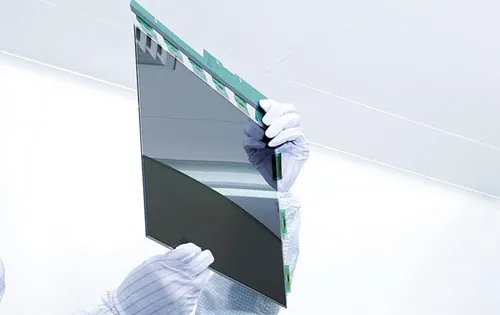On October 14th, according to foreign media reports, South Korea, which has two major panel manufacturers, Samsung Display and LG Display, has a considerable share of the global panel market, especially OLED panels used in large numbers in smart phones.

Panels are also an important export product of South Korea. South Korean media quoted data from the Ministry of Trade, Industry and Energy and reported that South Korean panel exports reached US$2.44 billion in September, a year-on-year increase of 15.7%.
In the report, South Korean media also mentioned that the export volume of panels increased significantly in September year-on-year, mainly due to strong demand for OLED panels for smartphones and TVs, which boosted exports.

It is worth noting that the OLED panels required for smartphones and TVs mentioned by the Korean media are areas where Samsung Display and LG Display have advantages.
In terms of OLED panels required for smart phones, Samsung Display has obvious advantages. For many years, it has been the exclusive supplier of OLED panels required by Apple's iPhone, and it is still the main supplier.
In terms of OLED panels used in smartphones, LG Display has a lower market share than Samsung, but they are also a supplier of OLED panels for the iPhone. LG Display has obvious advantages in the large-scale OLED panels required for TVs.
The 8 inch displays might be affected and delay for an accident.
This is the project management of how sinocrystal handle your customized project relate to displays.
New iPhone 13 Series will use On-Cell OLED Displays. And it that will be launched in the second half of this year will be exclusively supplied by Samsung Display (SDC)
A complete guide to LCD display connection methods, including SPI, I2C, RGB, MIPI, LVDS interfaces and physical mounting options. Learn how to connect monochrome and TFT LCDs to your development board or product housing.
This week, we had the pleasure of hosting an esteemed international client at our LCD display manufacturing facility in Dongguan. Guided by our team, the client visited key production areas such as the fully automated COG bonding line, backlight assembly area, full lamination workshop, and final product aging test section. They highly appreciated our production capacity, strict quality control, and engineering expertise. This visit strengthened mutual trust and set the stage for future collabora
The ILI9881C is a high-performance a-Si TFT LCD single-chip driver developed by ILI Technology Corp. With its excellent display performance and flexible configuration options, this driver meets the modern display device requirements for high resolution and color accuracy. This article will detail the supported resolutions, interfaces, and power supply voltage of the ILI9881C.
The GC9307, a TFT LCD driver with QVGA resolution, has gained widespread use among LCD module manufacturers since its launch. Sinocrystal are excited to share a series of practical insights we have gathered from using the GC9307 driver.